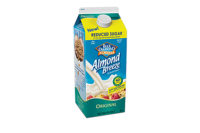
Chocolate Milk Rules
Longtime treat could find a new place on training tables.
Could chocolate milk be a new part of the breakfast of champions?
A study published in the February issue of the International Journal of Sports Nutrition and Exercise
Metabolism, and funded in part by the dairy
industry, reported that cyclists who drank chocolate milk were able to
continue cycling about 50 percent longer than those who drank a specially
formulated endurance beverage and about equally as long as those who drank
Gatorade.
In three trials administered at one-week intervals,
nine male cyclists performed a strenuous workout, then drank one of three
drinks, according to DairyNews.net. One group received standard 2%
chocolate milk, another drank fluid- and electrolyte-replenishing Gatorade
and a third group drank Endurox R4, a specially formulated beverage with a
“patented 4 to 1 ratio of carbohydrates to protein” and other
ingredients aimed at replenishing muscle glycogen stores and helping
rebuild muscle. After a rest, the cyclists exercised again, this time to
exhaustion. Some sports nutritionists weren’t surprised by the
results. “I’ve been touting chocolate milk for years,”
says Felice Kurtzman, sports nutritionist for UCLA’s athletic
department. “Chocolate milk provides carbohydrates, calcium, other
trace minerals. And the important thing is that the kids drink it. I can
tell you from our training table that football drinks it, swimming drinks
it, track drinks it.”
IDFA opposes proposed 3-A definition for ESL
IDFA representatives at May’s annual meeting of
3-A Sanitary Standards Inc. in Milwaukee expressed concern with a newly
proposed definition for extended-shelf-life (ESL) products. Under the plant
support systems working group’s proposed definition, only products
with a shelf life of more than 30 days would qualify as ESL products. The
proposal is still under review. State and federal regulators often look to
the 3-A standards when setting and enforcing their own regulations.
“We oppose this definition as unnecessarily restrictive,” says
Allen Sayler, IDFA senior director of regulatory affairs. “This
proposal also highlights our concern that more dairy processors need to be
involved in 3-A working group activities, to prevent changes like this to
3-A equipment standards and operating practices that are often enforced by
state and FDA regulators.” A further example of a potential problem
for dairy processors was the working group’s decision to replace all
“should” language in the 3-A practice on clean-in-place (CIP)
systems with “shall,” making these items a requirement rather
than a recommendation. More than 100 state and federal dairy regulators,
equipment manufacturers and dairy processing plant representatives attended
the annual meeting, including 15 IDFA members. For more information on the
annual meeting agenda and the activities, visit www.idfa.org.
$OMN_arttitle="Chocolate Milk Rules";?>




